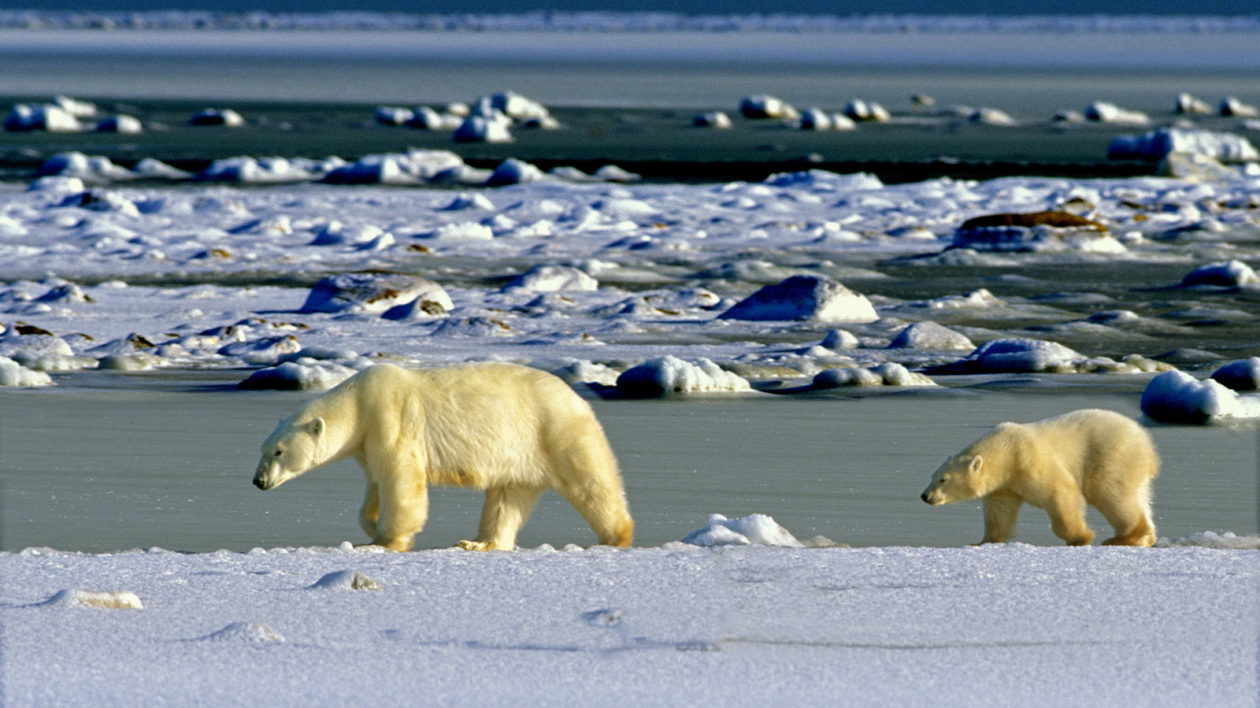
Polar bears may give the impression of being lone hunters, strolling across the ice in search of their next seal meal. However, recent research indicates they are unwittingly operating one of the Arctic’s largest food sources, leaving behind approximately 7.6 million kilograms of seal remains each year for a vast array of thankful scavengers.
The findings, published in Oikos, illustrate for the first time the extent of energy polar bears transfer from oceanic sources to icy landscapes. Each adult bear typically kills around 1,001 kilograms of marine mammal biomass each year. They consume their preferred parts, mainly the energy-rich blubber, and abandon the rest. Roughly 30% of each hunt ends up as carrion, available for scavengers on the sea ice.
This accumulates into an astounding feast: about 7 million kilograms of edible food, providing 155 million megajoules of energy across the range of polar bears. To contextualize, this is enough to support at least 11 known scavenger species, including Arctic foxes and ravens, in addition to eight more potential diners that researchers believe are taking advantage of the leftovers.
A Distinctive Hunting Technique Fosters a Distinctive Food Network
What renders polar bears irreplaceable goes beyond merely the quantity of food they generate. It’s the nature of their hunting technique. Unlike other predators, polar bears pull their prey from the ocean onto the ice, forming a temporary yet dependable feeding hub for species that might otherwise find it difficult to access marine nourishment. Imagine an Arctic fox, too diminutive to hunt seals itself, nibbling on the remains of a bearded seal while ivory gulls feast on adjacent scraps. It’s a striking illustration of ecological reliance.
“What stands out from this review is that there is no other species that adequately substitutes for how a polar bear hunts, dragging its prey from the water onto the ice and leaving significant remnants for other species to utilize.”
Holly Gamblin, the lead author of the study and a PhD candidate at the University of Manitoba, highlights that this behavior is unparalleled in the Arctic. No other predator facilitates this essential flow of energy from sea to ice in such a manner. The sea ice serves as a platform—a sort of communal dining area where terrestrial and marine food networks converge.
This research, a partnership between the University of Manitoba, San Diego Zoo Wildlife Alliance, Environment and Climate Change Canada, and the University of Alberta, illustrates an ecosystem that is far more interconnected than previously acknowledged. Polar bears are not merely apex predators; they are ecological architects, shaping the food web with each carcass they leave behind.
When the Provider Vanishes
However, there’s a troubling aspect to this narrative: polar bear populations are dwindling. Two subpopulations have already experienced significant reductions in numbers, and researchers project that this corresponds to over 300 tonnes of lost carrion each year. That’s 300 tonnes of sustenance that Arctic foxes, ravens, and other scavengers can no longer rely on.
The repercussions extend outward. As the Arctic warms and sea ice diminishes, polar bears are losing their hunting territories. Fewer bears result in a decrease in seal kills, which translates to less carrion. Scavengers reliant on this seasonal bounty, especially in lean periods, may also encounter declines. The food web, already beleaguered by climate change, loses one of its most dependable safety nets.
“The sea ice serves as a platform for many species to access scavenging resources made available by polar bears, and ultimately, diminishing sea ice will restrict access to this energy source.”
Dr. Nicholas Pilfold, a scientist at San Diego Zoo Wildlife Alliance, emphasizes that the loss isn’t solely about polar bears. It encompasses the entire ecosystem they uphold. When the ice disappears, so too does the platform that initially allows access to this carrion.
The study highlights an uncomfortable reality: conservation efforts aimed at protecting polar bears are not merely about saving a charismatic species. They’re about safeguarding the intricate network of life that relies on them, from the tiniest scavenging bird to the foxes that store seal blubber for winter. Eliminate the bears, and you eliminate the providers. And in the Arctic, where every calorie is critical, that is a loss the ecosystem cannot sustain.
If our reporting has informed or inspired you, please consider making a donation. Every contribution,